By David Jen
A new footbridge over Scotland’s historic Keltie Water, a stream, has once again joined together the two sides of the Bracklinn Falls Circuit, a 5 km loop trail in Loch Lomond & the Trossachs National Park.
The Bracklinn Falls Footbridge — constructed of perforated weathering steel, glass-fiber reinforced polymer decking, and stainless steel handrails — now spans 21.7 m across and 30 m above the series of stepped waterfalls known as Bracklinn Falls. Roughly 1.5 km northeast of the small town of Callander, the footbridge is the most recent iteration of a bridge across the falls, following a timber bridge removed in 2021 because of deterioration, which itself succeeded a steel bridge destroyed by flooding in 2004.
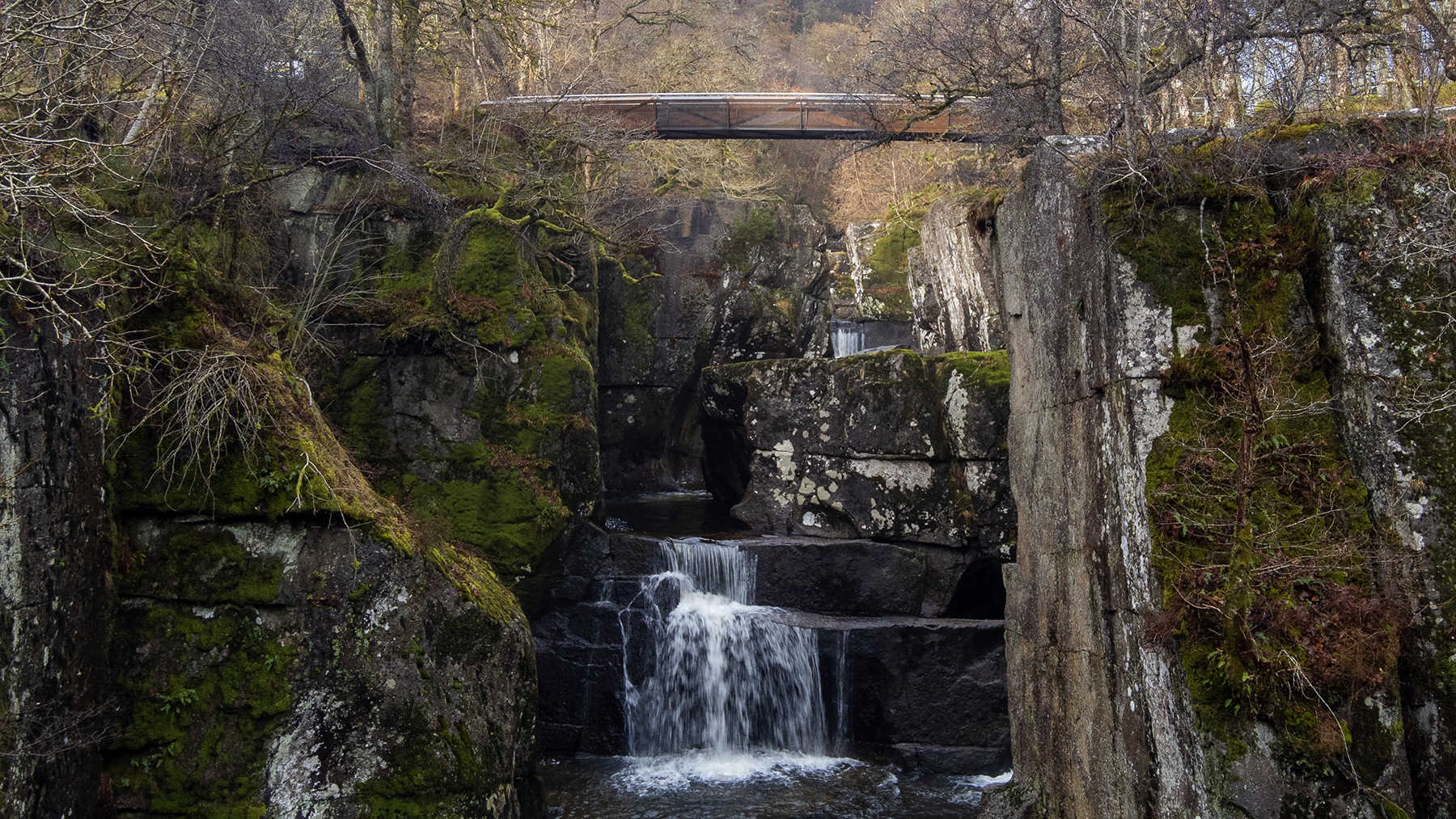
Bridport, England-based BEAM Architects and London-based Cake Industries designed the new bridge with a 120-year design life and with low cost and maintenance in mind.
“Replacing a bridge in an environmentally sensitive location like this is not an easy task,” says Heather Reid, the convener of the Loch Lomond & the Trossachs National Park Authority in written press material from the park authority. “The design and construction of the replacement bridge required a bespoke solution, which responded to the unique environment at Bracklinn Falls and the challenges in getting access through the ancient woodland and over the Keltie Water.”
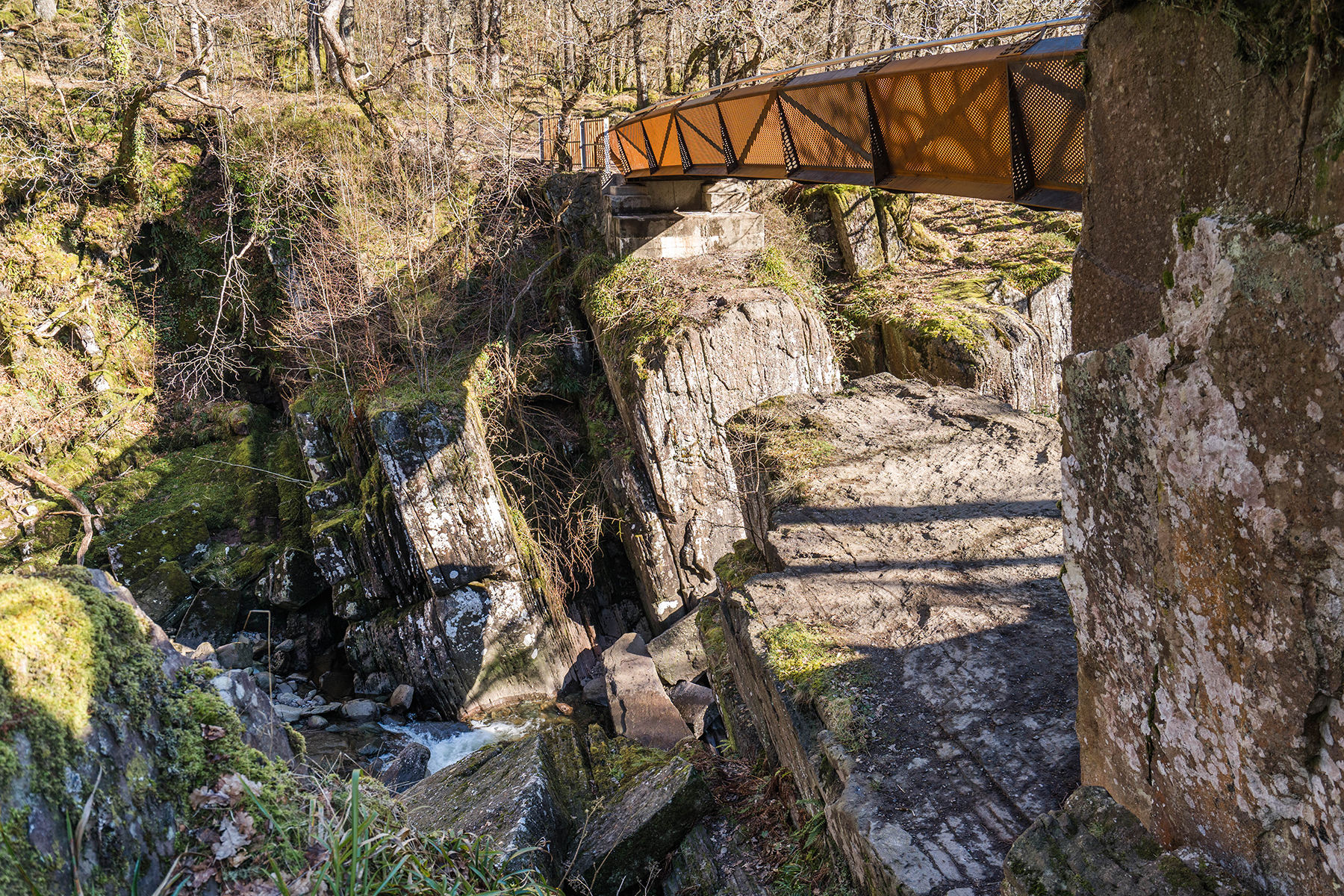
Loch Lomond & the Trossachs attracts more than 4 million visitors per year, according to the park’s website, with more than 70,000 visits annually to the falls.
Reid untied a bow made of recycled ribbon to declare the bridge open last month.
Because the site is accessible only by a forestry track and a steep, winding footpath, the bridge arrived in 2.7 m long modules delivered via midi excavator, according to written press material from Cake.
Crews first constructed the bridge sections on one side of the falls and then pushed them into place across the ravine along temporary rails.
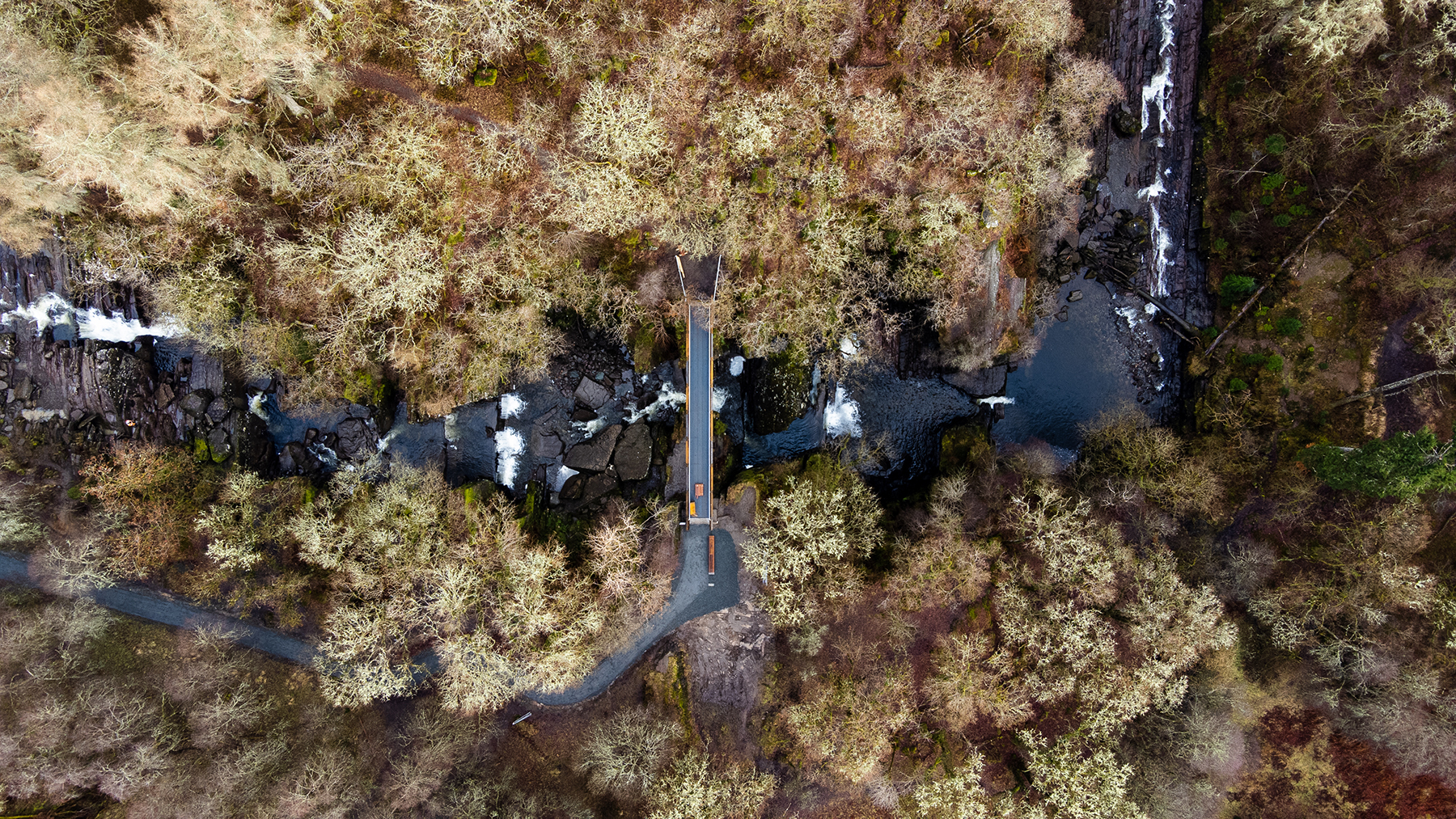
The completed bridge measures 21.7 m long and 2 m wide with Z-profile panels and two longitudinal beams along its sides.
The panels bolt together through intermittent U-frames while the beams also serve as guardrails that “lean out from the deck to provide a generous spatial environment for users,” writes Cake. “In views along the bridge the upstands appear reassuringly opaque but in lateral views the opacity dissolves to reveal the landscape and falls below.”
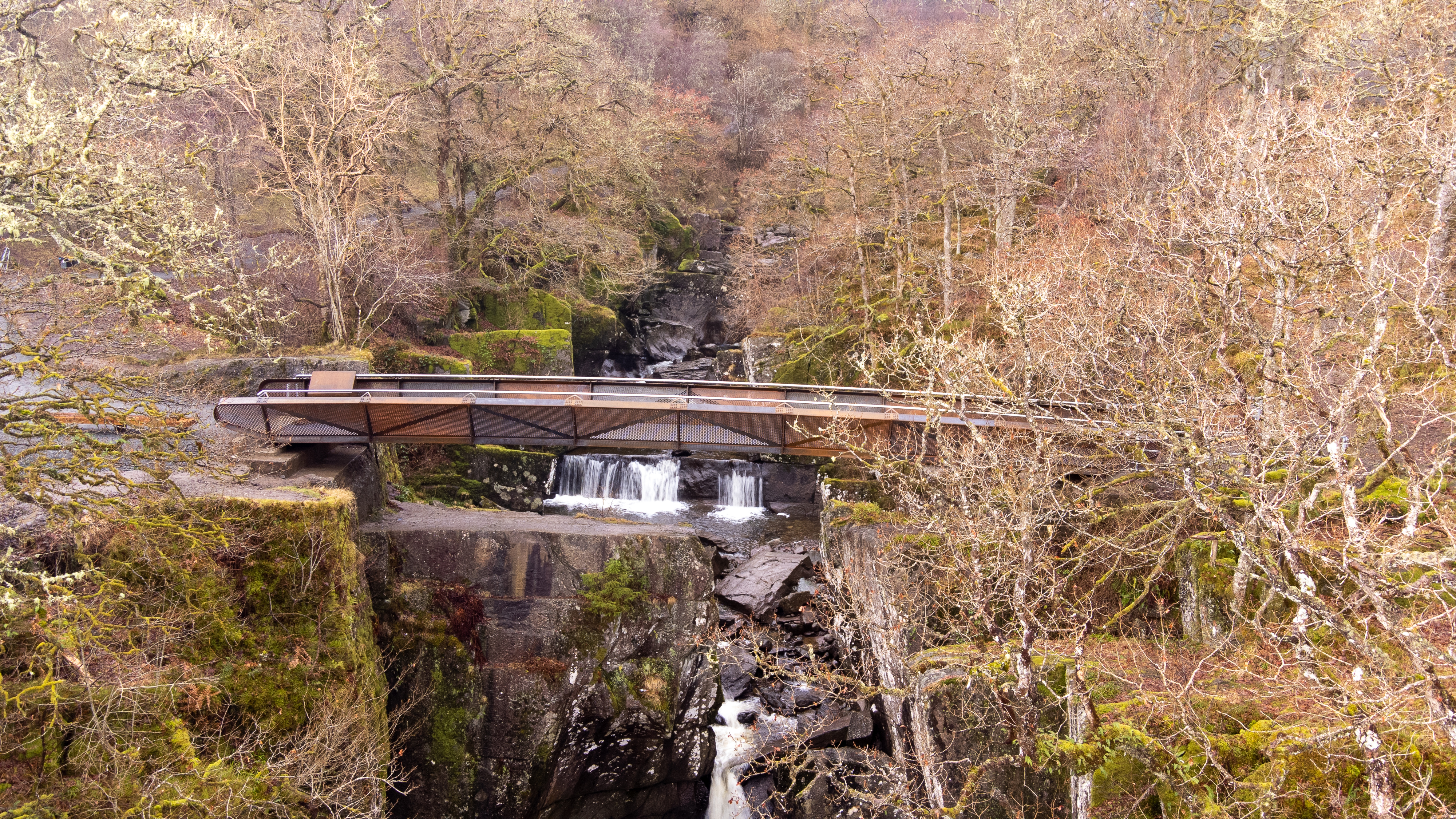
According to the Callander Heritage Society, the first bridge at Bracklinn consisted of two logs covered with branches and turf, although the date of construction is unknown. Since then, the falls and subsequent versions of the bridge, despite numerous falling deaths, have continued to attract visitors, including Sir Walter Scott, author of The Lady of the Lake (1810), and Queen Victoria in the 1870s.
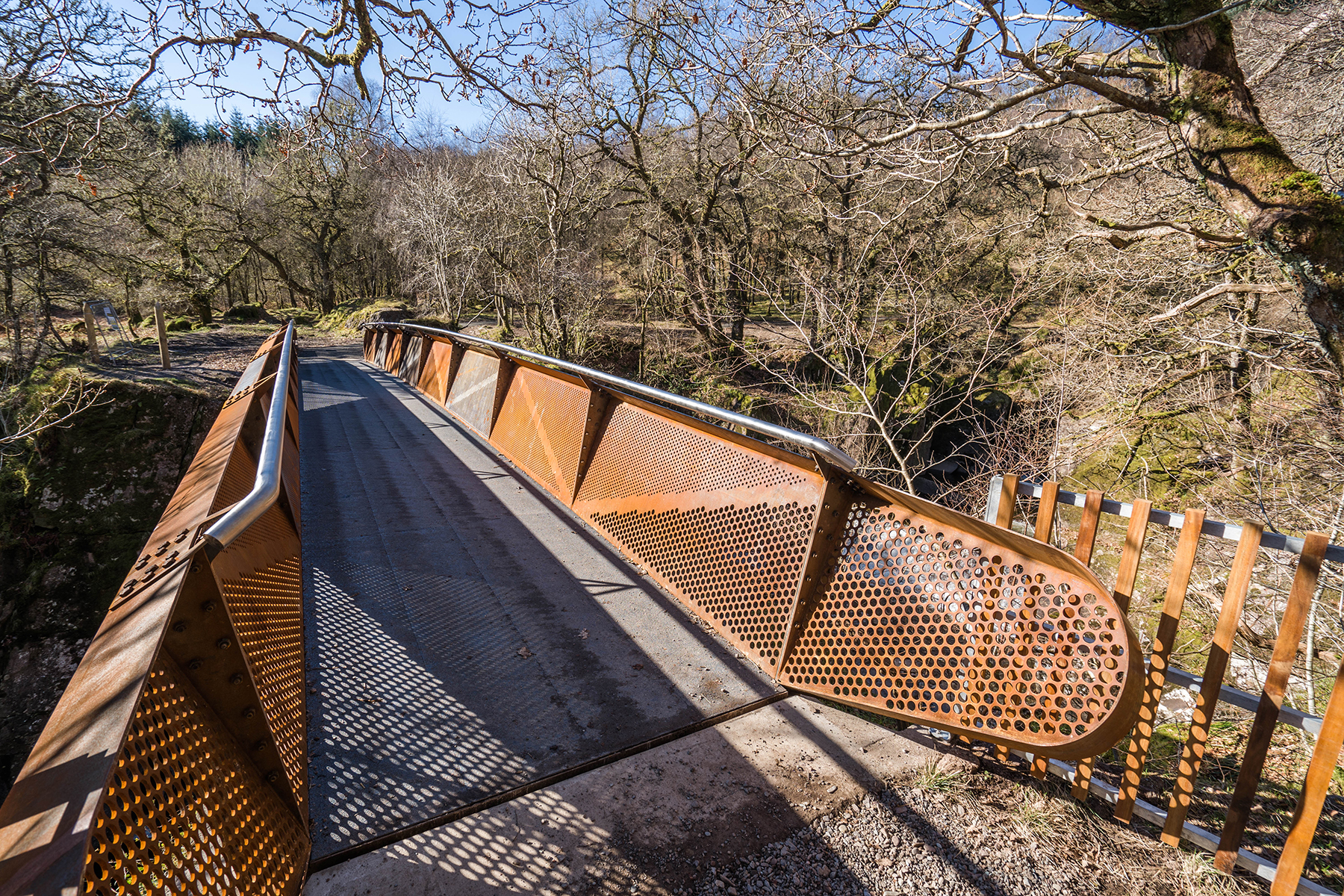
This article first appeared in Civil Engineering Online.



